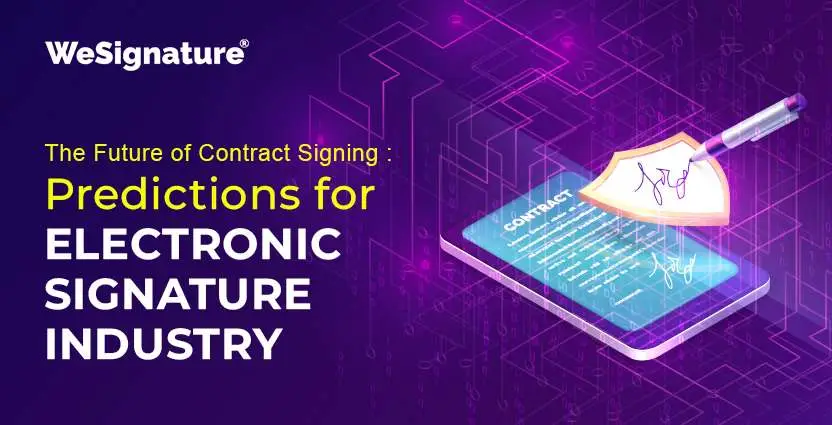The Future of Contract Signing: Predictions for the Electronic Signature Industry

Gone are the days of physical signatures, with electronic signatures becoming increasingly popular in recent years. An electronic signature serves as a digital equivalent of a handwritten signature, enabling the signing of documents without the use of physical pen and paper. Often referred to as an e-signature, this technology allows for a more efficient and convenient way to sign important documents. The electronic signature industry is constantly evolving and has the potential to revolutionise the way we sign contracts and other legal documents.
In this article, we will discuss the current state of the electronic signature industry and make predictions on what the future holds for the technology.
Current State of the Electronic Signature Industry
The electronic signature industry has come a long way since its inception in the 1990s. Early electronic signature software was often expensive and difficult to use, leading to slow adoption.
However, the technology has become more user-friendly and cost-effective in recent years, leading to a significant increase in usage.
According to a report by the Electronic Signature and Records Association (ESRA), the global electronic signature market is expected to reach $15.72 billion by 2027, growing at a compound annual growth rate of 22.9% from 2020 to 2027.
Benefits of Using Electronic Signatures
There are numerous benefits to using electronic signatures, both for businesses and individuals. One of the primary benefits is the ability to sign documents remotely, which is especially useful in the current climate where remote work has become more common.
Electronic signatures enable rapid document processing by allowing documents to be signed and returned almost instantly. In addition, electronic signatures can help to reduce the amount of paper used, leading to a more environmentally friendly process.
Role of Electronic Signatures in Work-Flow Automation
Electronic signatures can also play a significant role in automating workflows within a business. There are a lot of benefits of workflow automation for small business that have been discussed in another article, you can find it by visiting in the blog section.
By integrating electronic signatures into a company’s work-flow process, it is possible to streamline the signing of documents and eliminate the need for manual processes. This has the potential to boost a company’s productivity and efficiency.
Potential for Electronic Signatures to Go Mainstream
Despite gaining traction, many individuals and businesses remain hesitant to adopt electronic signatures.
As e-signatures evolve, they’re likely to become the norm for contract signing as adoption grows.
In fact, it is predicted that electronic signatures will eventually replace physical signatures altogether.
Legal Considerations of Electronic Signatures
One of the primary concerns surrounding electronic signatures is their legal validity. In the United States, electronic signatures are legally binding under the Electronic Signatures in Global and National Commerce Act (ESIGN).
In addition, many other countries have passed legislation recognizing the legal validity of electronic signatures. It is essential to ensure that any electronic signature solution you use meets the necessary legal requirements.
Conclusion
Constant innovation in electronic signatures may soon replace traditional contract signing and legal documents.
Electronic signatures offer remote signing, faster processing, and reduced paper use, benefiting both businesses and individuals.
Electronic signatures may fully replace physical ones as technology advances further.
However, it is essential to ensure that any electronic signature software you use meets the necessary legal requirements.
